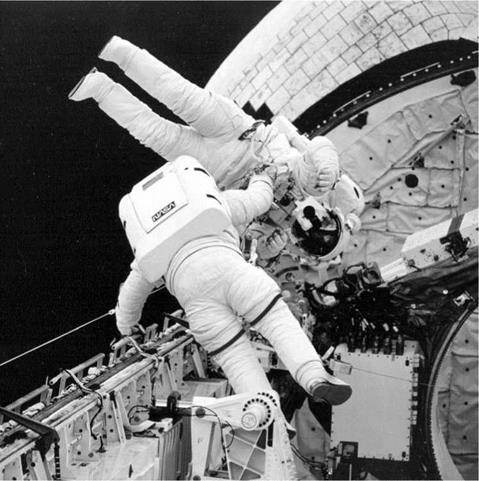STS-54
 1993-003A 13 January 1993
1993-003A 13 January 1993
Pad 39B, Kennedy Space Center, Florida 19 January 1993
Runway 33, Kennedy Space Center, Florida
OV-105 Endeavour/ET-51/SRB BI-056/SSME #1 2019;
#2 2033; #3 2018
5 days 23hrs 38 min 19 sec
Endeavour
Deployment of TDRS-F by IUS-13; EVA operations, procedures and training exercise
Flight Crew
CASPER, John Howard, 48, USAF, commander, 2nd mission Previous mission: STS-36 (1990)
McMONAGLE, Donald Ray, 38, USAF, pilot, 2nd mission Previous mission: STS-39 (1991)
RUNCO Jr., Mario, 39, USN, mission specialist 1, 2nd mission Previous mission: STS-44 (1991)
HARBAUGH, Gregory Jordan, 35, civilian, mission specialist 2, 2nd mission Previous mission: STS-39 (1991)
HELMS, Susan Jane, 33, USAF, mission specialist 3
Flight Log
The launch of STS-54 was delayed by just seven minutes over concerns about upper – atmospheric wind levels. The primary objective of the mission was the deployment of the sixth Tracking and Data Relay Satellite by IUS, which was accomplished on FD 1.This was the fifth successful deployment, with TDRS-B having been lost in the January 1986 Challenger accident.
Also located in the payload bay was the “hitchhiker experiment”, the Diffuse X-ray Spectrometer (DXS), which was designed to collect X-ray radiation data from diffuse sources in deep space. Despite some difficulties in operating this experiment, it did return good science data. Additional experiments included one to record microgravity acceleration, and a solid surface combustion experiment that recorded the rate of flame spread and the temperature of burning filter paper. A UV Plume Imager, mounted on a free-flying satellite, observed the orbiter and obtained data on the vehicle during controlled conditions. The crew also continued the long programme of photography of the Earth surface begun in the 1960s. This was catalogued at JSC as the Earth Observation Project, and liaised with various global scientific research
|
Harbaugh (back to camera) carries Runco along the starboard side of Endeavour’s payload bay during the 17 January EVA. He is evaluating the ability of astronauts to move a “bulky” object about in space by hand |
efforts, allowing Shuttle crews to document specific features and phenomena of interest.
The FD 5 EVA (17 Jan, 4 hours 28 minutes) was the first of a series of EVAs planned for the next three years, leading up to start of space station construction (planned at that time to be 1996). With only two missions having included EVA operations since the return to flight in 1988, there was an urgent need to develop experience, techniques and procedures on extensive EVA operations prior to constructing the space station. On STS-54, the two EVA astronauts (Harbaugh EV1 and Runco EV2) tested their ability to freely move around the payload bay, to climb into the foot restraints without using their hands, and to simulate carrying large objects in the microgravity environment. This was also useful in evaluating the possibility of rescuing an incapacitated crew member during an EVA. They also evaluated the differences and similarities in these tasks between training simulations and actual orbital operations. After the EVA, they answered detailed questions on their experiences and, following the mission’s return to Earth (which was delayed by one orbit due to ground fog at the Cape), went back into the WETF to evaluate the tasks again, for comparison with the actual EVA and to help improve future training procedures.
The crew also participated in the Physics of Toys experiment during a 45-minute live TV transmission. Staff at the Museum of Natural Science helped to develop the course, which was designed to generate interest in science at schools. The toys were selected by a team of physicists. The Physics of Toys experiment was a follow-on to the Toys in Space package flown on STS 51-D in 1985.
Milestones
157th manned space flight
83rd US manned space flight
26th US and 48th flight with EVA operations
53rd Shuttle mission
3rd flight of Endeavour
6th TDRS deployment mission











